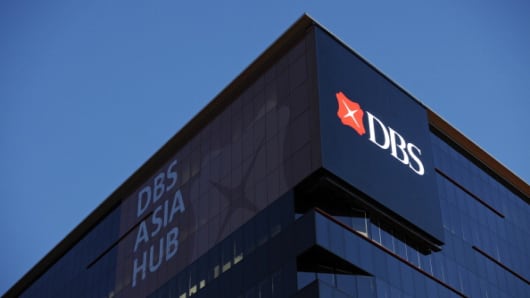Oil has strengthened, but Singapore banks not out of the woods yet

Stronger global oil prices have yet to benefit the offshore marine sector, whose continued troubles are expected to dominate the narrative this week when Singapore’s three largest banks release their earnings reports.
Analysts told CNBC that the continued struggles among oil and gas debtors could lead to the banks — among the largest in Southeast Asia — setting aside more money for potential losses, which threatens their bottom lines.
All three Singapore banks are due to report their fourth quarter earnings this week, starting with Oversea-Chinese Banking Corporation (OCBC) on Tuesday, followed by DBS Group Holdings on Thursday and United Overseas Bank (UOB) a day later.
“We expect the three banks’ profitability in the fourth quarter to see negative pressure due to their exposure to the oil and gas sector. We see that the banks are not out of the woods yet with that exposure, which have led to the banks having higher NPL (non-performing loan) ratios,” said Eugene Tarzimanov, senior credit officer at Moody’s Investors Service.
“The deterioration in the oil and gas books means that the banks will require more specific provisions, but the impact on their profit and loss statement will not be severe as they will continue to utilize existing general provisions. This might bring down their NPL coverage level to slightly below 100 per cent — a still healthy level,” he added.
Over the past year, the banks set aside hundreds of millions in extra Singapore dollars after offshore services firm Swiber Holdings unexpectedly filed for bankruptcy.
In the latest sign of a still-weak oil and gas industry, Ezra Holdings flagged earlier this month that it could possibly write down $170 million due to problems with one of its joint ventures, EMAS Chiyoda Subsea.
All three major Singapore banks are Ezra’s principal bankers, but none has revealed their exposure to Ezra. A note from Malaysian bank CIMB earlier this month estimated that Southeast Asia’s largest lender, DBS, has a S$637 million ($447 million) exposure to Ezra — the largest among Singapore’s three biggest banks. OCBC’s exposure is estimated to be S$300 million ($211 million), while UOB’s is at S$166 million ($117 million).
Aside from the oil and gas industry, analysts said the real estate sector’s impact on banks is also worth watching. Cooling measures and loan curbs imposed by the Singapore government since 2009, coupled with rising interest rates, have hit home sales and the take-up of new housing loans.
“We saw the number of new mortgage originations and existing home sales slowing in the fourth quarter… I am more inclined to believe that recent developments are expected to have further spooked the real estate sector, reducing the loan pool which banks could have tapped on for revenues,” said Phillip Futures investment analyst Woon Tian Yong.
Woon said the key challenges facing the Singapore banking sector in 2017 include rising interest rates, which may worsen the credit quality of the banks’ existing loan portfolio with a greater number of defaults, and slower domestic growth.
“Singapore’s banks may have to find themselves having to further diversify their businesses amid a sluggish domestic economy. This means venturing out to emerging markets to seek a higher return than the already saturated and competitive domestic banking scene,” he said.
Still, one bright spot this year is the stabilizing oil prices above $50 per barrel after the Organization of the Petroleum Exporting Countries (OPEC) moved tocut production, Tarzimanov said. That may slow down the formation of bad loans in the industry.
[Source:- CNBC]

